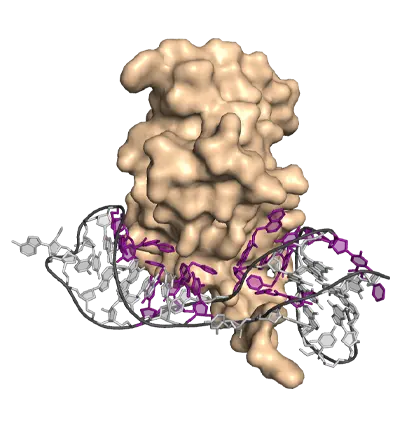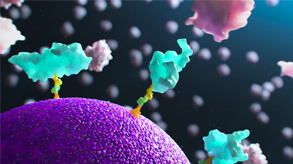Aptamers vs. Antibodies
Protein detection, identification and quantification have traditionally been performed using antibodies as affinity based reagents. The SomaScan Platform utilizes single stranded DNA aptamers called SOMAmer (Slow Off-rate Modified Aptamer) Reagents.
The methods you choose for protein research matter
Proteins are the most effective indicators of disease mechanisms and responses. They reveal cell states in real time, across conditions, and are pivotal for diagnosis, prognosis, patient stratification and therapeutic monitoring.
Understanding how different discovery methods influence which proteins are identified is key to making informed research decisions.
Advancing proteomic technologies often claim to be able to find the most proteins, low-abundance proteins or important proteins for a specific disease. However, the way proteins are discovered is an important factor in which proteins are discovered.
Two widely used approaches in protein discovery employ aptamers or antibodies as binding reagents for subsequent protein analysis. However, they differ in fundamental ways that can impact research outcomes. Understanding these differences is essential for selecting the right tool for your study.

WHITE PAPER
Precision in Proteomics:
The Key to Reliable, Reproducible Data
Not all protein detection methods deliver the same level of consistency. Understanding how different platforms impact reproducibility ensures that your research yields reliable, reproducible results.
Aptamers vs. Antibodies: What’s the difference?
Both aptamers and antibodies are binding reagents used for protein detection, but they differ in structure, production and performance. Antibodies are naturally produced proteins designed to bind specific antigens, making them effective for affinity assays. However, because they are derived from biological systems, they can have natural variability that affects performance and reproducibility.
Aptamers, on the other hand, are short, single-stranded DNA or RNA molecules that can be chemically synthesized for high specificity and sensitivity. Unlike antibodies, aptamers can more easily be engineered to optimize binding properties, ensuring consistency and stability over time. The SomaScan™ Platform utilizes Single SOMAmer™ Reagents, which incorporate chemical modifications to enhance binding strength and selectivity. This allows for highly precise protein detection, even in complex biological samples.
Why reproducibility matters: Head-to-head comparison
A recent study in cerebrospinal fluid (CSF) research compared leading high-throughput proteomics platforms. The SomaScan Platform demonstrated superior reproducibility and reliability, ensuring confidence from discovery to clinical translation.
PUBLICATION
Puerta, R. et al.
Head-to-head comparison of aptamer- and antibody-based proteomic platforms in human cerebrospinal fluid samples from a real-world memory clinic cohort.
medRxiv (2024)
SOMAmer Reagents vs. Antibodies:
Key differences in affinity-based protein assays
Why SOMAmer Reagents are the superior choice

Choosing the right affinity-based protein detection method is critical for obtaining reliable, reproducible and high-quality data. While antibodies have been the traditional choice, SOMAmer Reagents offer key advantages, including improved consistency, optimized selection and enhanced control over non-specific binding. These benefits make the SomaScan Platform a powerful tool for high-plex, high-throughput proteomic studies.




